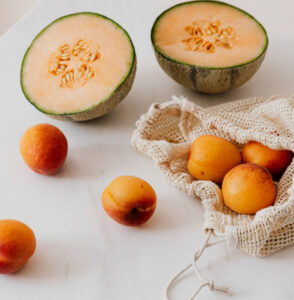Are you tired of constantly battling your weight and feeling like your energy levels are always crashing? If so, it’s time to discover the incredible power of a low-carb diet.
From shedding stubborn pounds to skyrocketing your vitality, this guide has everything you need to know about embarking on a life-changing journey toward better health and well-being.
Get ready to unveil the secrets behind this revolutionary approach and unlock a world of delicious possibilities that will leave you feeling satisfied, energized, and ready to conquer any challenge that comes your way!
What is a Low Carb Diet?
A low-carb diet is a dietary approach that restricts carbohydrate intake to promote weight loss and other health benefits. Carbohydrates are found in various foods, including bread, pasta, rice, potatoes, fruits, and sweets. A low-carb diet typically limits carbohydrate intake to less than 130 grams daily.
There are many different types of low-carb diets, each with its own set of rules and recommendations. The most popular low-carb diets include the Atkins Diet, South Beach Diet, Zone Diet, and Paleo Diet. Each diet is effective for weight loss and improving overall health.
The best way to find the right low-carb diet is to consult a registered dietitian or physician. They can help you create a plan that fits your needs and lifestyle.
Benefits of Low-Carb Diets
When it comes to weight loss, low-carb diets are one of the most effective options available. By drastically reducing your carbohydrate intake, you can force your body to burn fat for energy – resulting in rapid weight loss. In addition to weight loss, low-carb diets offer several other health benefits.
You automatically cut out a lot of sugar and processed foods from your diet by cutting out carbs. This means you’re consuming fewer empty calories and unhealthy ingredients. Low-carb diets have been shown to improve blood sugar control and cholesterol levels and reduce the risk of heart disease. They can also help stabilize blood sugar levels in people with diabetes.
A low-carb diet is worth considering if you want to improve your overall health and lose weight.
Foods to Avoid on a Low-Carb Diet
When it comes to following a low-carb diet, there are certain foods that you will want to avoid. These foods can be high in carbohydrates and can cause your blood sugar levels to spike. Here is a list of some of the worst offenders when it comes to following a low-carb diet:
-Bread
-Pasta
-Rice
-Potatoes
-Fruit juices
-Soda
-Alcohol
Foods to Eat on a Low-Carb Diet
If you’re following a low-carb diet, there are certain foods you’ll want to include in your meals and snacks. Here are some of the best foods to eat on a low-carb diet:
-Eggs: Eggs are a great source of protein and fat, making them perfect for a low-carb diet. You can cook them in various ways or even eat them hard-boiled as a snack.
-Meat: Meat is another excellent source of protein and fat, both important on a low-carb diet. Choose leaner cuts of meat to keep your fat intake in check.
-Fish: Fish is a great option for those following a low-carb diet, as it’s relatively low in carbs and protein. Plus, it’s packed with healthy omega-3 fatty acids.
-Vegetables: Vegetables are essential to any diet but are especially important on a low-carb diet. Make sure to load up on non-starchy vegetables like leafy greens, broccoli, and cauliflower.
-Cheese: Cheese is high in fat and protein, making it ideal for those following a low-carb diet. Just be sure to choose full-fat varieties, as they tend to be lower in carbs than their reduced-fat counterparts.
Recipes
When following a low-carb diet, it is important to have a variety of recipes at your disposal to keep things interesting. Here are some of our favorite low-carb recipes:
-Zucchini Noodles with Tomato Sauce: A healthy and flavorful alternative to pasta made with zucchini noodles and topped with homemade tomato sauce.
-Cauliflower Rice Stir-Fry: A delicious and easy stir-fry made with cauliflower rice, veggies, and your choice of protein.
-Shepherd’s Pie: A hearty and comforting shepherd’s pie made with ground beef, vegetables, and mashed cauliflower instead of potatoes.
-Chicken Caesar Salad: A healthier version of the classic salad made with grilled chicken, romaine lettuce, homemade Caesar dressing, and Parmesan cheese.
-Berry Crumble: A delicious dessert with fresh berries and a crispy almond flour topping.
Alternatives to a Low-Carb Diet
If you want to change your diet but need to know if a low-carb diet is right for you, there are plenty of other options. Here are some alternative diets that you may want to consider:
-The Paleo Diet focuses on eating like our ancestors did – mostly meats, vegetables, and fruits.
-The Mediterranean Diet: This diet is based on the traditional foods of countries like Greece and Italy and includes lots of healthy fats, seafood, and fruits and vegetables.
-The Vegetarian Diet: As the name suggests, this diet eliminates all meat and poultry products. It can be either full vegetarian (no animal products) or lacto-ovo vegetarian (includes dairy and eggs).
-The Vegan Diet: Similar to the vegetarian diet, it excludes all animal products, including dairy and eggs.
-The Atkins Diet: This low-carb diet allows for more protein than other low-carb diets, making it a good option for those looking to build muscle mass.
Tips for Success on a Low-Carb Diet
When it comes to following a low-carb diet, you can do a few things to set yourself up for success. Here are some tips to help you along the way:
1. Make sure you’re getting enough protein. Protein is essential for keeping your muscles healthy and preventing cravings. Aim for at least 20 grams of protein per day.
2. Remember to skimp on the fat. Fat is an important part of a low-carb diet and helps to keep you feeling satiated. Include healthy fats like olive oil, avocados, nuts, and seeds in your meals and snacks.
3. Drink plenty of water. Staying hydrated is key to any diet, but it’s especially important when cutting back on carbs. Make sure to drink eight glasses of water per day.
4. Get plenty of fiber. Fiber helps to keep you regular and can also help to reduce cravings. Include high-fiber foods like vegetables, legumes, and whole grains.
5. Plan. Meal planning can be a big help when sticking to a low-carb diet. By planning your meals and snacks ahead of time, you’ll be less likely to give in to temptation or make unhealthy choices when hungry.
6. Don’t be afraid to indulge occasionally. Low-carb diets don’t have to be about deprivation. You can still enjoy treats like dark chocolate or a glass of wine occasionally without sabotaging your progress.
Conclusion
Low-carb diets are an effective way to lose weight and stay healthy. You can create a diet plan that works best for you and your goals with the right guidance.
By following these tips, you can ensure your low-carb journey is successful from start to finish. Remember to keep track of what works for you and focus on whole foods as much as possible. With the right approach, a low-carb lifestyle can be enjoyable and rewarding!



